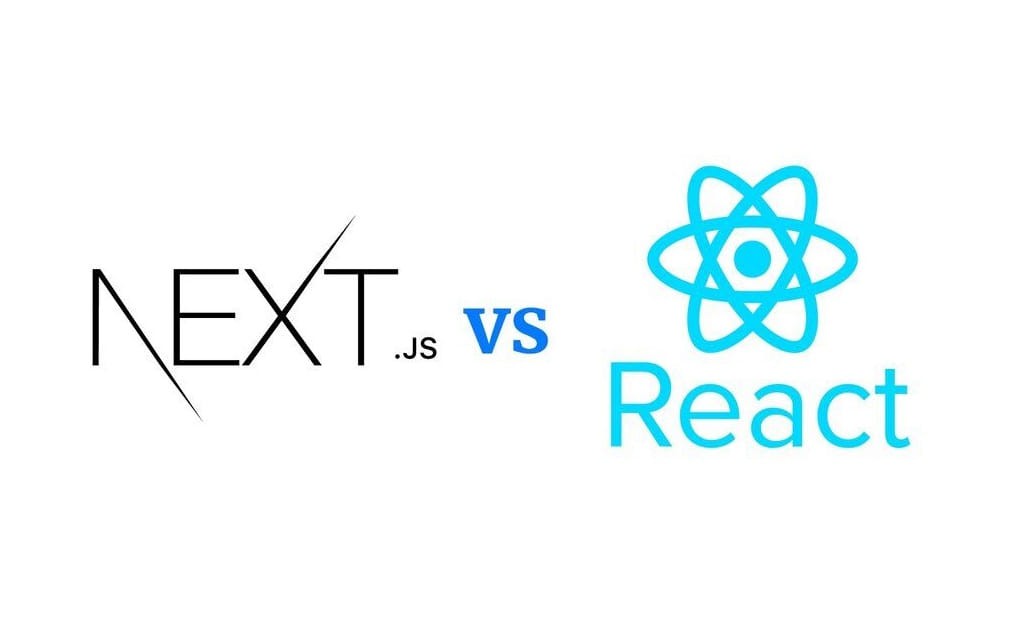When designing an exciting new project’s construction and framework, this topic will likely be at the forefront of every developer’s thoughts. What platform should you choose: Next.js or React? Both frameworks have a lot to offer to developers and business owners. We will explore Next.js against React debate to determine which front-end framework is better!

As an experienced developer, you’ve likely used React for some time, and you’re considering changing to Next.js. You may have just started making use of React and are contemplating switching to Next.js. Whatever the case, it’s based on the features you’d like from an application framework.
We’ll look at each of them to determine how they work together though frameworks are different.
What’s Next.JS?
Next.js is developed using the Babel framework Node.js and Node.js and integrates React to create single-page applications. This framework was designed by Vercel and is a free, open-source platform.
Additionally, Next.js is a fantastic framework for using React. It can be used with the React library to build websites and apps. (SSR) rendering server-side and HTTP caching standardization SEO tools, automated code segmentation, and dynamically importing Webpack or other bundles.
Next.js was an eagerly-awaited extension to React. Next.js is becoming increasingly popular with developers because of its ability to create ready-to-use apps. While Next.js is fantastic, it can’t be used as a replacement for React.
What is the goal of Next.JS?
If your needs are clear, you can choose one of the two methods at specific points; one has an advantage over the other. If you want to create using Next.js, you can do so with Next.js.
- To create the page for landing,
- The importance of SEO is vital.
- Promotion of websites
- Create web pages that load fast.
How do we define React?
React was initially developed by Facebook and is now among the top well-known front-end libraries.
React is among the most popular JavaScript frameworks. A few years ago, React took the JS world by storm and soon became the undisputed leading position. React suggests the use of the reactive method as well as functional programming.
React is working to establish industry standards. For example, Redux is considered the best platform for building enterprise-grade React applications. However, you should consider the following aspects:
This means that we’re facing the same problem in deciding:
You’ll need to design your workflow with React. It is a more complex approach than using the tools other JavaScript frameworks provide, with various pre-built tools included in the framework.
It is important to note that Reacts is more of an application library (a tool that can be utilized in any type of project (similar to a Hammer) and not an architecture), which is the reason for you to design your own workflow.
Next.js vs . React: Speed of Coding and Ease of Coding
If you wish to create pages for the React application, you must make a component first and connect it to the router.
If you’re looking to create pages to be used in The Next.js project, you must place the webpage in the folder for pages and then click the heading component links. It simplifies your work as you write less code, and the program is simple to follow.
If you’re only beginning your journey with React and its capabilities, then creating a React App is an excellent opportunity to begin learning. The CRA can also give you a kick start when you’re looking to utilize React to create a single Page Application (SPA).
Because the Create React App is solely responsible for creating assemblies for the front end, it is possible to make use of it using any server you like, for instance, Node.
Next.js and React Performance
Apps developed using Next.js are extremely speedy thanks to static websites and rendering on the server. They’re efficient by default due to a variety of performance optimization options like Image Optimization introduced in Next 10.
If you decide to use Next.js, it will benefit from the automatic rendering of servers as well as code split (which will enhance the performance).
Next.js and React: Features
Next.js makes use of React to assist developers in creating single-page applications.
It contains:
- Server-side rendering (SSR)
- Exportation of static (SSG)
- Pre-rendering
- Automated optimization of build size
- Faster development compilation
Each of these features can assist you in creating a functional and ready-to-go app.
Next.js Vs. React Documentation
It is obvious, but it is often ignored. While the modern web pages of certain frameworks may catch your attention, you’ll still require additional lessons or books, tutorials, and even articles other than the standard and tedious documentation that will help you get started.
There are excellent documentation alternatives in Both React along with Next.js.
Next.js offers a “learn-by-doing” documentation set that guides you through tasks like routing and creating components. React also offers a similar setup with a variety of tutorials on the basics.
We bring a clear comparison between Next.JS & React. Now React JS development services also add Next. JS in their working protocol to make their services top-notch quality.

Welcome to Invovision, where technology meets creativity. We’re a forward-thinking software company that offers a range of services to elevate your digital presence. From captivating graphic design and seamless app and web development to robust Odoo solutions, SEO expertise, and top-notch cyber security, we’ve got you covered. Our UI/UX designers ensure an engaging user experience, while our digital marketing strategies drive your brand to new heights. At InvoVision, we’re not just shaping software; we’re crafting digital success stories. Join us on this journey, and let your vision thrive in the world of innovation.